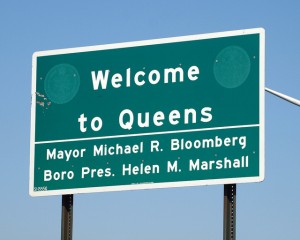 On Oct. 23, a “hatchet-wielding” man attacked and wounded several police officers in New York City (Queens). Naturally, media outlets immediately started speculating about what could have prompted this man to carry out such a horrific attack. According to several accounts, the man was a recent convert to Islam who had “self-radicalized.” The New York Times headline reads:
On Oct. 23, a “hatchet-wielding” man attacked and wounded several police officers in New York City (Queens). Naturally, media outlets immediately started speculating about what could have prompted this man to carry out such a horrific attack. According to several accounts, the man was a recent convert to Islam who had “self-radicalized.” The New York Times headline reads: ![]() The article goes on to paint a portrait of this lone wolf who was “self-directed in his activities”:
The article goes on to paint a portrait of this lone wolf who was “self-directed in his activities”:  This depiction is fairly absurd to anyone familiar with social theory. First of all, how does one “self-radicalize” or “grow radical on his own”? The characterization of “radical” Islam requires that there is a normative understanding of Islam present to which one can react. Therefore, the very suggestion that one expresses “radical Islam” means one did not develop one’s interpretation in a vacuum. Second, the New York Times piece provides plenty of evidence to conclude that this interpretation of Islam did, in fact, not happen in social isolation. There was a larger community of interpretation, made up of “radical websites,” Facebook, and YouTube. These venues, though existing only digitally, are inherently social—hence social media. They are not individual media. What’s to be gained in pretending that this interpretative community doesn’t exist?
This depiction is fairly absurd to anyone familiar with social theory. First of all, how does one “self-radicalize” or “grow radical on his own”? The characterization of “radical” Islam requires that there is a normative understanding of Islam present to which one can react. Therefore, the very suggestion that one expresses “radical Islam” means one did not develop one’s interpretation in a vacuum. Second, the New York Times piece provides plenty of evidence to conclude that this interpretation of Islam did, in fact, not happen in social isolation. There was a larger community of interpretation, made up of “radical websites,” Facebook, and YouTube. These venues, though existing only digitally, are inherently social—hence social media. They are not individual media. What’s to be gained in pretending that this interpretative community doesn’t exist?
The idea that any of these violent actors “grows radical” on their own is indeed bizarre. They, like others, operate in social structures (of which the internet is certainly part) that provide and create meanings, forge connections to other social actors, and construct contexts of interpretation. An “extremist terrorist” can no more create his or her identity ex nihilo than anyone else can. By assuming that this man managed to create his radical interpretation “on his own” suggests that we don’t have to engage in the messy enterprise of trying understand his community of interpretation.  That may be the easy way out, but if we’re interested in understanding–and hence intervening–in this sort of violence, it won’t suffice. This is similar to labeling these phenomena “evil”–whether we call these figures “evil,” “self-radicalized,” or something similar, it all amounts to letting ourselves off the hook for explaining them. So James Dawes:
That may be the easy way out, but if we’re interested in understanding–and hence intervening–in this sort of violence, it won’t suffice. This is similar to labeling these phenomena “evil”–whether we call these figures “evil,” “self-radicalized,” or something similar, it all amounts to letting ourselves off the hook for explaining them. So James Dawes:
We can say they are evil people doing evil things for evil ends. Or we can do the hard work of understanding the context that made them, so that we can create a context that unmakes them.
(See also: Bruce Lincoln’s “Theses on Religion & Violence“)